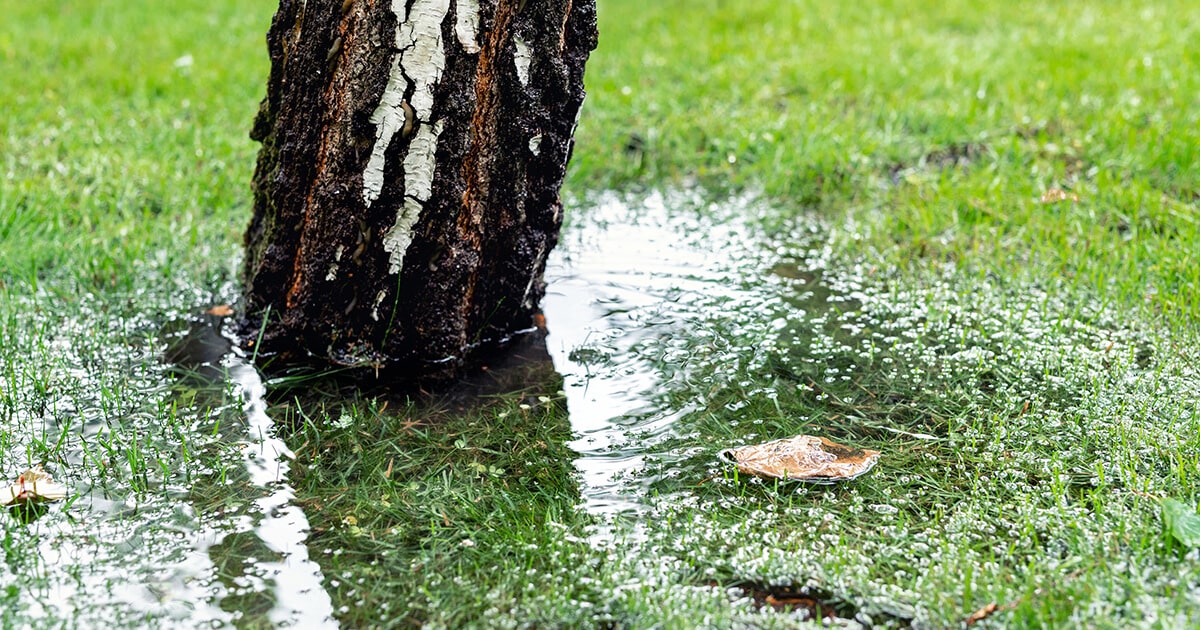Spring brings warmer weather and longer days, and at times, heavy rain. That’s certainly borne out this season. So what will all this rainfall do to the trees on your property?
Extended heavy rainfall can do quite a lot of damage to trees. Here are the three main dangers, along with some tips on how to protect your trees.
Soil Saturation
There’s only so much water the soil around your tree can hold. Once it reaches saturation, the pores — tiny holes in the soil that allow air to reach plant roots — start to fill up, depriving the roots of the oxygen they need to stay healthy.
Root Rot
After a period of heavy rainfall, the soil stays wet for a few days afterwards, and fungal diseases love wet conditions. This leaves your tree’s roots vulnerable to rot. There is little that is more important to a tree’s integrity than the roots — once the rotting starts, it can quickly jeopardize the health of your tree.
Look for signs like yellow and brown discolouring on the tree’s leaves and dying, brittle branches and twigs.
Once roots are completely rotted, the tree becomes unstable and dangerous and may need to be removed.
Nutrient Deficiencies
Heavy rain can even flush the soil of nutrients that are important to your tree’s health, making it even more difficult for trees to withstand the other challenges the rain brings.
How Can I Protect the Trees on My Property?
Move the Mulch
Mulch, normally helpful to have around your tree’s trunk, can heighten the risk of root rot during the rain-heavy months by causing build up in your tree’s root system. Move away any mulch that’s touching your tree trunk to reduce the risks. A foot or two should be enough.
Aerate Your Soil
Aerating your soil involves drilling small holes in the soil around your tree to allow more oxygen to reach the tree roots. This is generally easier to do with moist soil after a bit of rainfall, but it’s inadvisable after large amounts of rain.
This can be a difficult process, so if you’re looking to aerate your soil, we recommend leaving it to professionals.
Let the Soil Dry Out
As mentioned before, the soil around your tree will stay wet for days after the rain stops. Give it time to dry out completely before watering your tree again.
Replace Soil Nutrients with Liquid Compost
Apply liquid compost around your tree to replenish nutrient-flushed soil with the stuff your trees need to stay strong and recover from rain damage. You can find liquid compost at most gardening centres.
Follow Your Arborist’s Recommendations
Make sure you’re diligent in caring for your tree year-round — the healthier it is, the better chance it stands at surviving prolonged rainfall. See our blog post for tips.
For tree support and consultations, remember your friendly neighbourhood expert arborists at Kildonan Tree Service. Contact us today to get advice specific to the trees on your property.

